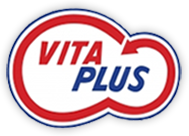
Feed availability: Timing is of the essence
 By Brandon Van Soest, Ph.D., Vita Plus dairy technical specialist
By Brandon Van Soest, Ph.D., Vita Plus dairy technical specialist
While all tasks on a dairy farm have their challenges and importance, arguably feeding cows is one of the most important. Consistency is key when providing cows with the best circumstances to perform. Milk production, health and reproduction can suffer if a cow does not receive the correct proportions of nutrients daily.
When discussing nutrient intake, feed availability is paramount; cows must readily have access to feed. This statement, while elementary, is the crucial foundation for proper nutrition. For feed to be available, it must be in the bunk and within reach. This means timing is of the essence.
Trevor DeVries, Ph.D., explored timing of feed through feed delivery and pushups at the University of Guelph. The greatest number of cows at the feedbunk occurs following fresh feed delivery and milking activity. Thus, it is pertinent to have feed available when cows return from the parlor. In a research study (DeVries and von Keyserlingk, 2005), feed was pushed up and available to cows as they returned from milking, but fresh feed delivery was delayed 6 hours post-milking. This resulted in cows consuming feed more slowly and for a longer period of time with more frequent meals and ultimately improved feed efficiency.
This difference in feeding behavior actually improves the rumen dynamics compared to slug feeding by increasing salivation rates (Beauchemin et al., 2008) and rumen buffering capacity. Increasing the frequency of feed delivery has also been shown to improve feed availability as subordinate cows are displaced less frequently from the feedbunk and sorting is reduced (DeVries et al., 2005).
While still important, feed pushups have had less of an effect on production and feeding behaviors compared to fresh feed delivery. Feed pushups have been associated with increased daily lying duration (Deming et al., 2013), suggesting increased feed access allows cows to consume feed more efficiently. Ultimately, when cows eat, feed is inevitably pushed and tossed around within the bunk, resulting in feed getting out of reach. Having a protocol set to push up feed and return it to the cow’s reach is beneficial for positive feeding behavior.
A major contributor to feed availability is the cows’ access to the feedbunk. This is directly related to the amount of time that cows spend away from the pen, which varies dramatically from farm to farm based on pen size, parlor size and type, and several other management factors. However, this time can be as short as half an hour to more than six hours a day (Gomez and Cook, 2010) that a cow is in the holding area, parlor or sorting rail. Cows that experience more time away from the pen reduce their time budgeted for other activities such as lying down, eating and drinking. The cow then chooses which activity she prioritizes and could give up valuable eating time to lie down. This highlights one of the benefits of robotic milking systems, as the cow truly only leaves the “pen” when she is in the milking stall or in a fetch/commitment pen. All farmers, but especially those utilizing a conventional parlor, should periodically monitor and continually limit the time cows are outside the pen to help maximize feed availability to their cows.
When it comes to feed availability, the key concept to remember when prioritizing management decisions is that timing is of the essence. This gives the cows the best circumstances to perform. Your Vita Plus consultant can help you identify strategies to maximize feed availability.
| Category: |
Dairy Performance Feed quality and nutrition |

